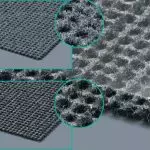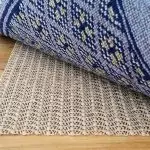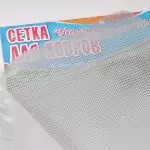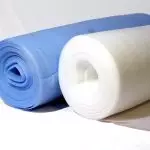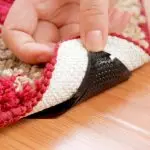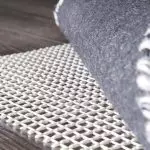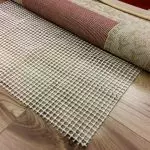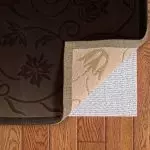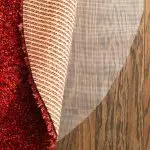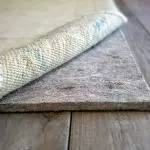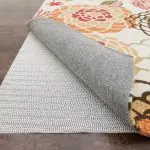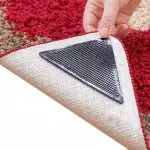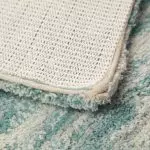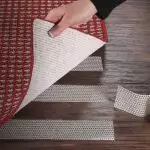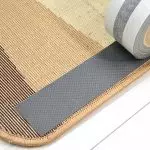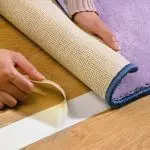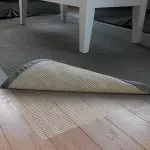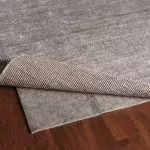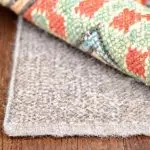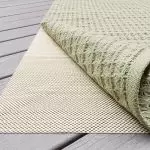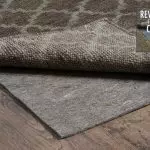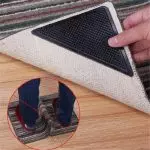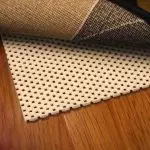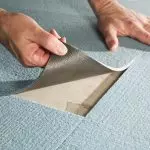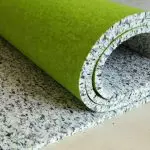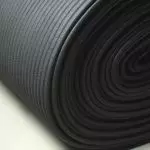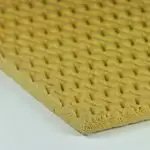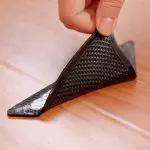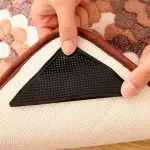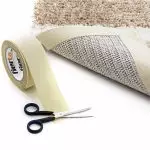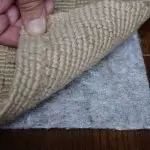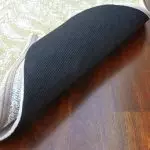It is difficult to present any dwelling without carpets that adorn the interior. But not only this is their functional purpose. Additionally, they play a role in increasing the degree of heat and sound insulation. Different materials are used in the production of carpet products and floor coverings. Therefore, the problem is often found when the carpet slides on the floor. In this case, the opposite position of the anti-slip substrate will help.
Criterias of choice
The selection of the substrate for a rig from slip is carried out taking into account several factors. First of all, pay attention to the material. To this end, various options are used:
- acrylic;
- rubber;
- silicone;
- foamed material;
- rubberized thread and so on.
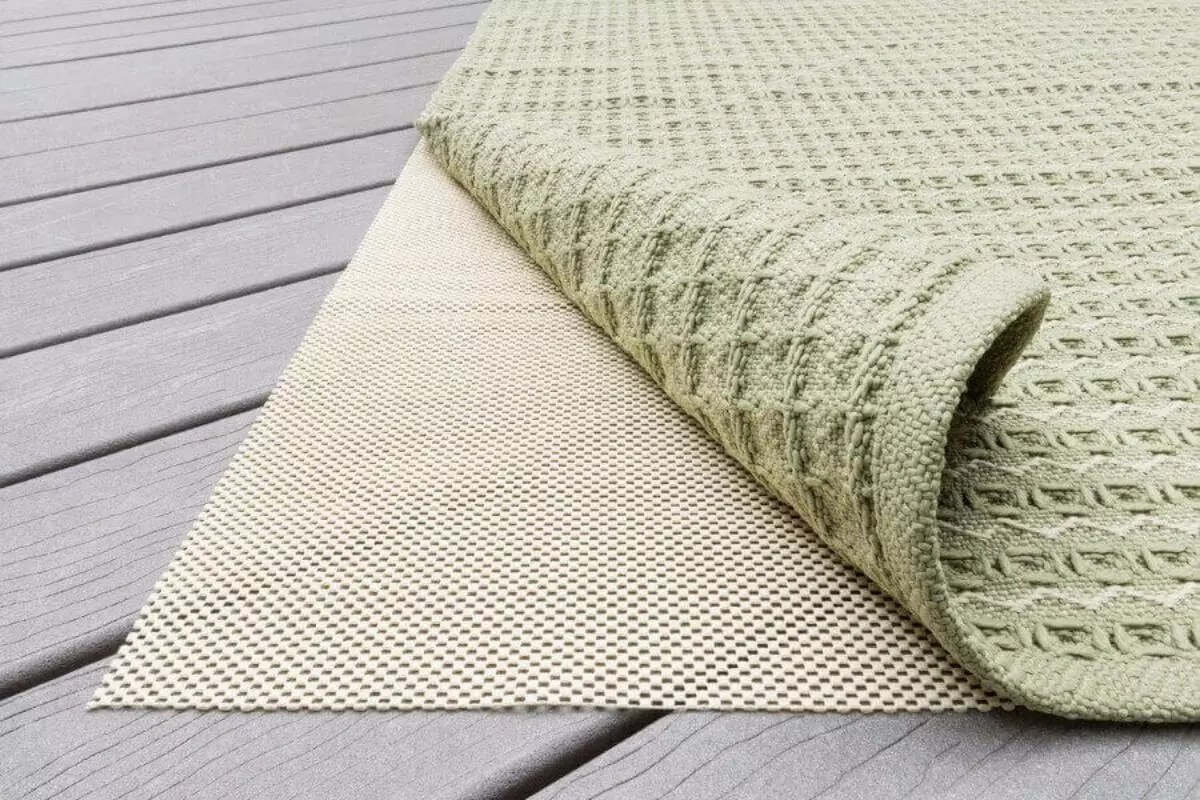
The next aspect to which attention should be paid is the thickness of the substrate. This fact is capable not only to exclude sliding, but also improve other properties of the carpet, for example, to increase the degree of softness. In the event that the carpet has quite large sizes, it is not necessary to make a substrate under the entire product, it is enough to buy several segments that are evenly distributed under the carpet, and fasten the edges, center and corners.
Next is the type of carpet cover, its dimensions and thickness. According to these characteristics, the type of substrate is selected:
- For small mats, the dimensions of which do not exceed 1 × 1.5 m, a thin non-slip grid is selected. It is especially important that the carpet does not slide if it is located in the room with a high degree of passability.
- For large carpets, the dimensions of which are 2 × 3 m and more, lining from materials of natural origin will be suitable. The felt lining will be quite cope with its direct task and will additionally protect the floor covering. In normal cases, the thickness of 0.5 cm is quite enough, but if you want to achieve softness and greater depreciation, you can take 1 cm thick, but usually it is superfluous.
- In order not to slide a thin carpet, having a short pile, combined gaskets. This is usually a combination of felt with rubber. Such products are not only able to prevent bending at the corners, but also to ensure dense adjacent over the entire surface. In these cases, the thickness of the gasket varies from 0.3 to 0.5 cm.
- For thick products, the substrate is ideal for a carpet, the thickness of which is 0.6 cm. Excess the indicator is not recommended, since the large thickness of the carpet will interfere with the walking due to a significant difference between the floor level and the surface of the coating.
Article on the topic: Classic style carpet: Form, texture, color - How to choose?
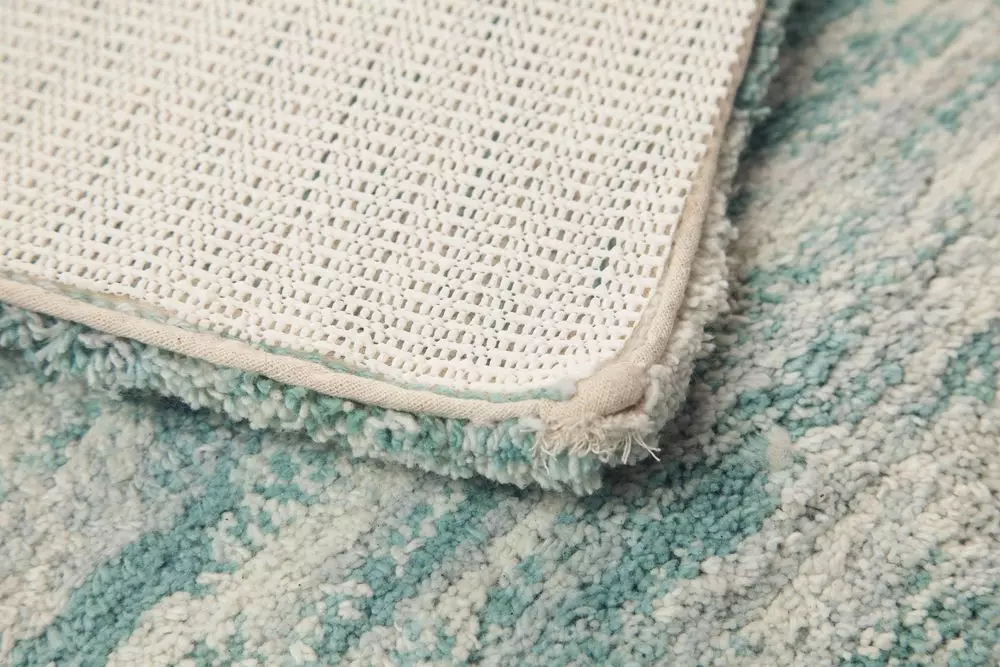
How to fix the anti-slip mesh on the carpet
For a greater probability of fixing the carpet to the anti-slip grid, you must use additional funds. Usually, bilateral scotch is in this role. It must be attached from the wrong side of the carpet, the grid is pasted on top, then the product turns over and is located in the place allotted for it.
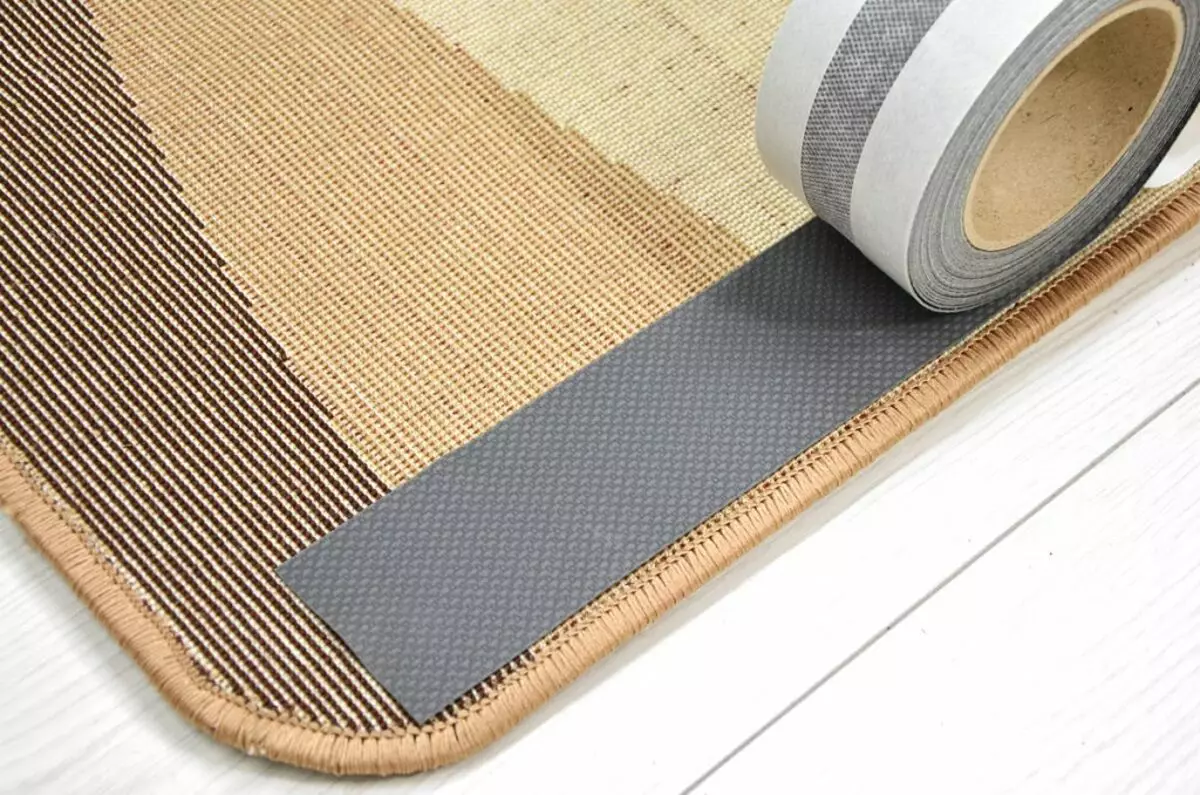
Substrate dimensions
The dimensions of the substrate for the carpet vary, depending on the material from which it is produced. Some options need to be selected and placed 1-2 cm in short throughout the perimeter than the carpet.
Some manufacturers are immediately released in a pair with a carpet appropriate to him. Therefore, they have different shapes:
- rectangular;
- Square;
- circular;
- Oval and others.
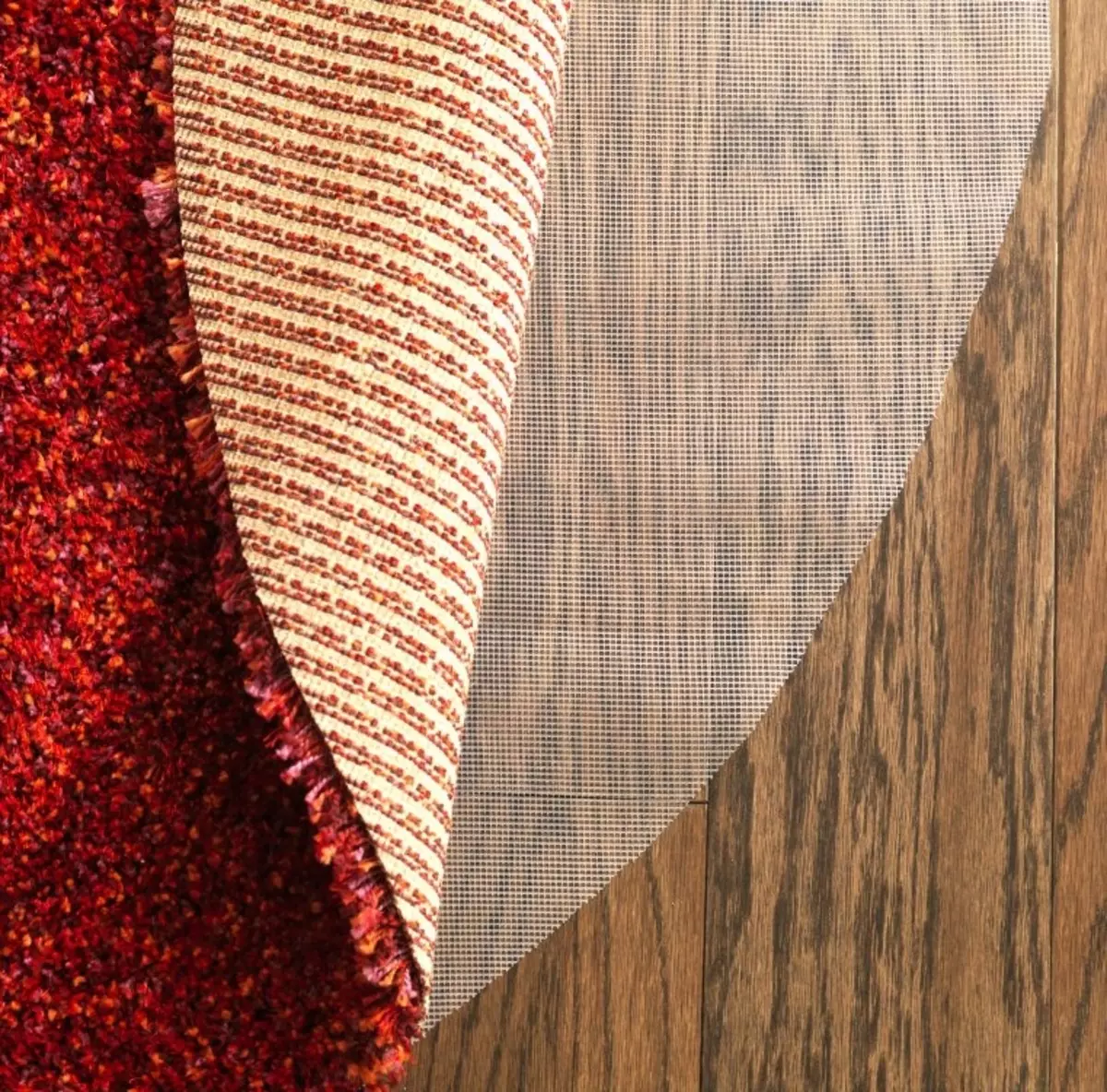
It is not necessary to choose the substrate size in accordance with the carpet size dimensions. It is usually sold in rolls. The product is purchased at the required length. The cost is usually set for 1 m.

For huge carpets, you have to acquire anti-slip bedding under the carpet of several parts. The connection of the parts is made by means of a special tape. With it, you can reliably connect the parts of the substrate.
Anti-slip corners for carpets
A good option to eliminate the problem with the slide of the carpet are anti-slip rubberized corners. They are great for products placed in a nursery or on a slippery floor in the bathroom. In appearance are small triangles that are attached at carpet corners.
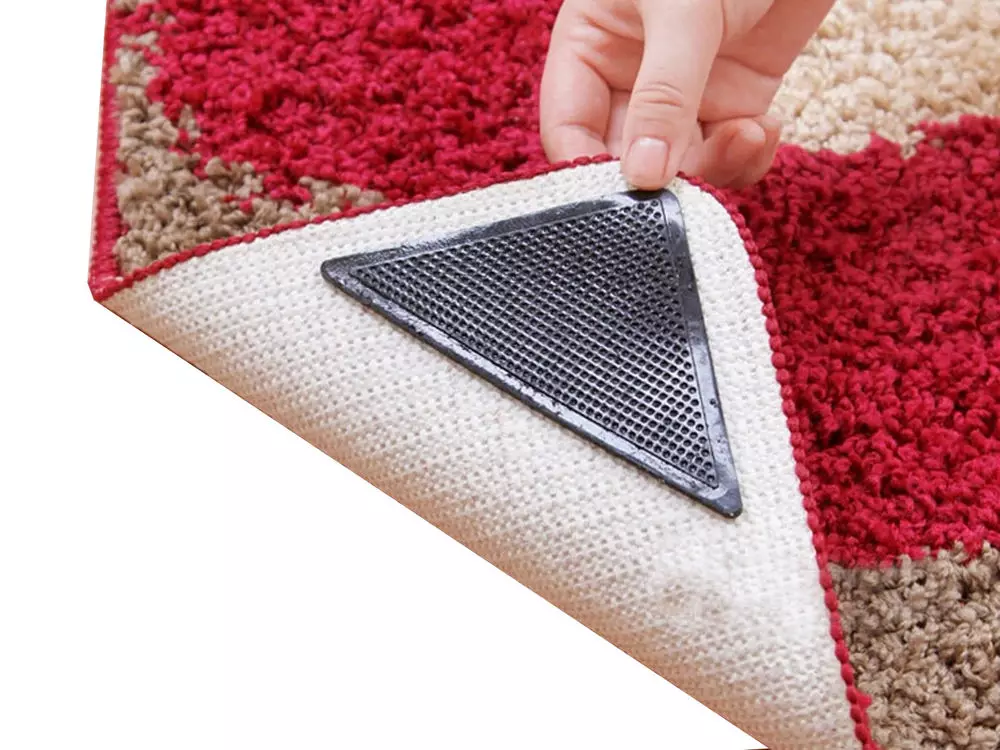
On video: Overview of silicone carpet corners.
Types of substrate
A variety of anti-slip substrates for a carpet to prevent slipping on floor covering, such as laminate, ceramic tile and linoleum, quite large. The main substrate is divided according to the type of material from which it is made. All of them have their own characteristics and nuances to use.Polyurethan
Products made of foamed polyurethane are one of the demanded options among consumers. Convenient to use for residential premises. In turn, polyurethane foam bedding have several subspecies. Imagine the characteristics of some of them.
Article on the topic: Children's rug puzzle: What is his advantages and what better to choose?
Ordinary foam
Material makes polyurethane foam, which is made of non-recycled materials. Its density is quite different - from the lowest to high. Specifically, foam rubber with a high degree of density is used for the carpet.
When choosing a foam rubber, originally look at its technical characteristics. It must be appropriate density and fully respond to the technical characteristics of carpet coatings.
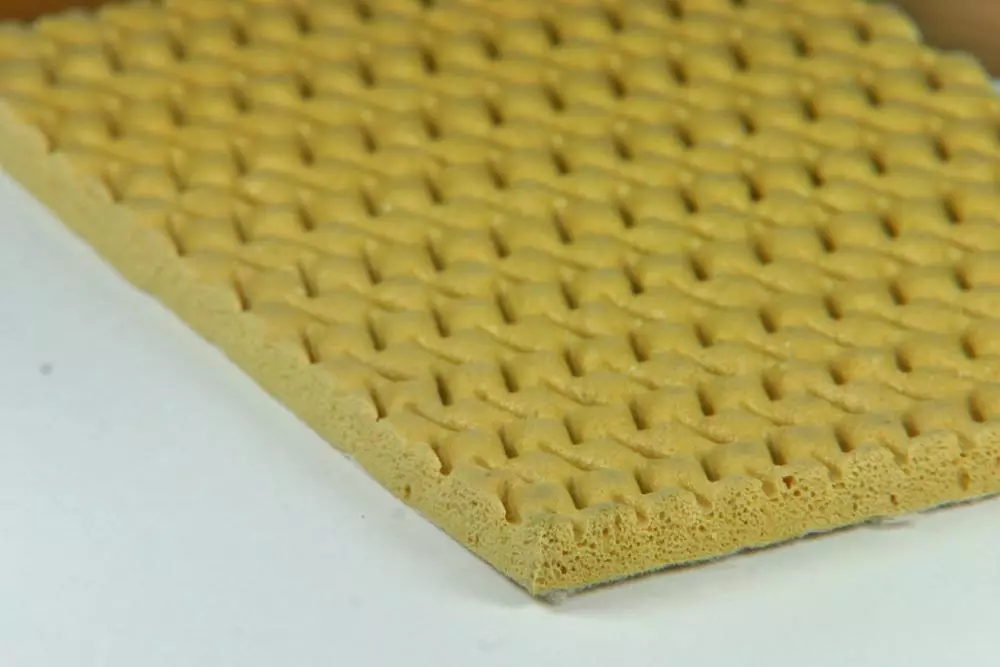
For conventional foam rubber, the presence of "air pockets". They are able to provide additional softness of the carpet. But the same fact is the reason that the product quickly loses its properties at a pressure on it. Therefore, products with high density are used for the substrate.
Secondary foam rubound, or rebound
In the production of this material, various pieces of foam materials are used. From ordinary foam rubber, such a substrate differs in the presence in its structure of multi-colored particles. It also has different densities and thicknesses, so that it can be used for any kinds of carpeting.
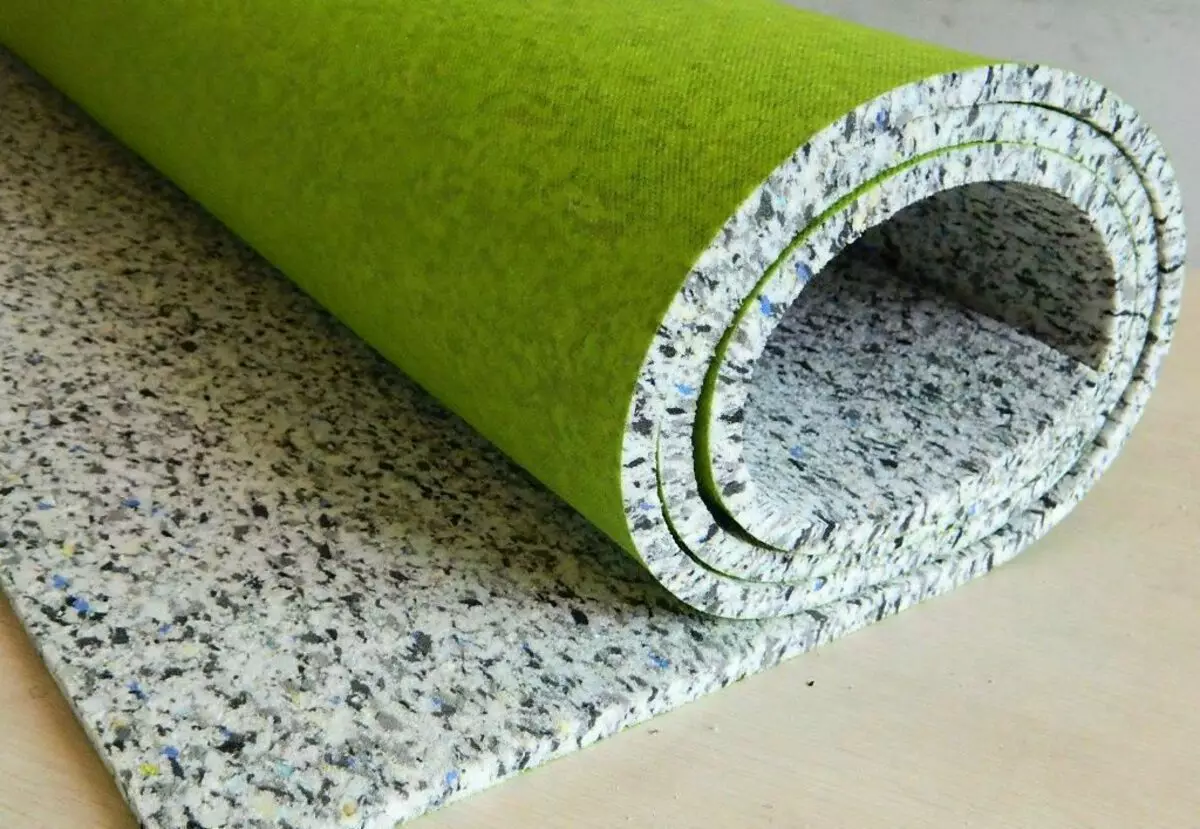
Rubber
Anti-slip substrates for a spongy rubber carpet. Mainly used for commercial and public premises. In residential rooms they are trying not to use. Of the rubberized options that can be used in everyday life - combinations of rubber and felt.
Individual use of felt does not reduce the degree of slip. This function performs the rubber layer located at the bottom of the gasket.
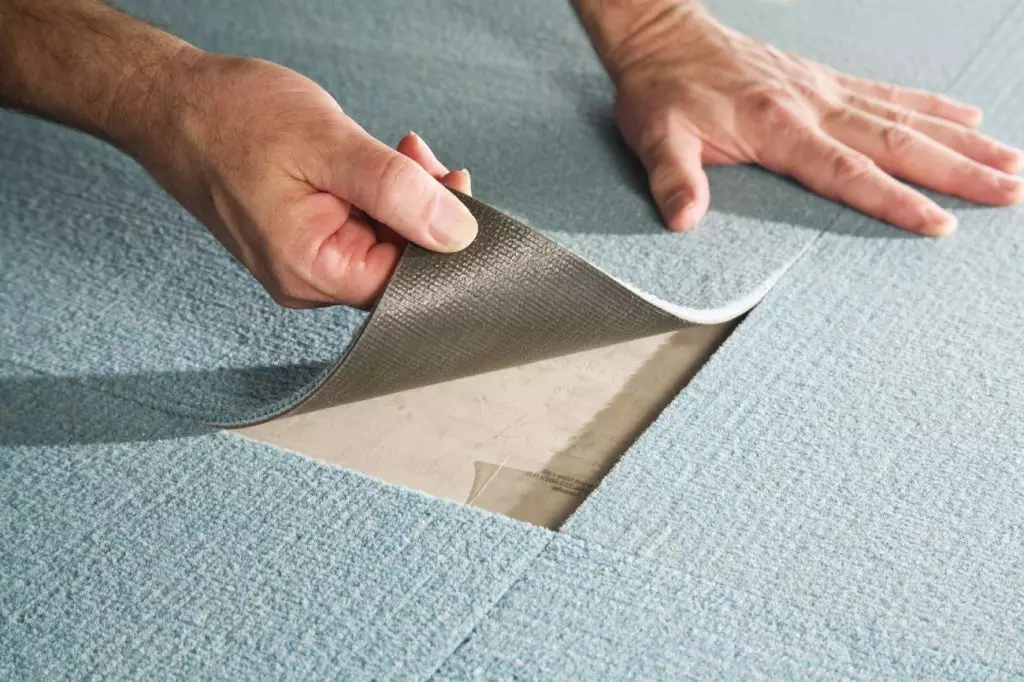
Felt
There are felt anti-slip bedding, which are made from natural and synthetic fiber. Mostly selected for pretty heavy and thick oriental carpets. Such substrates are capable of creating good depreciation, additional heat and sound insulation.
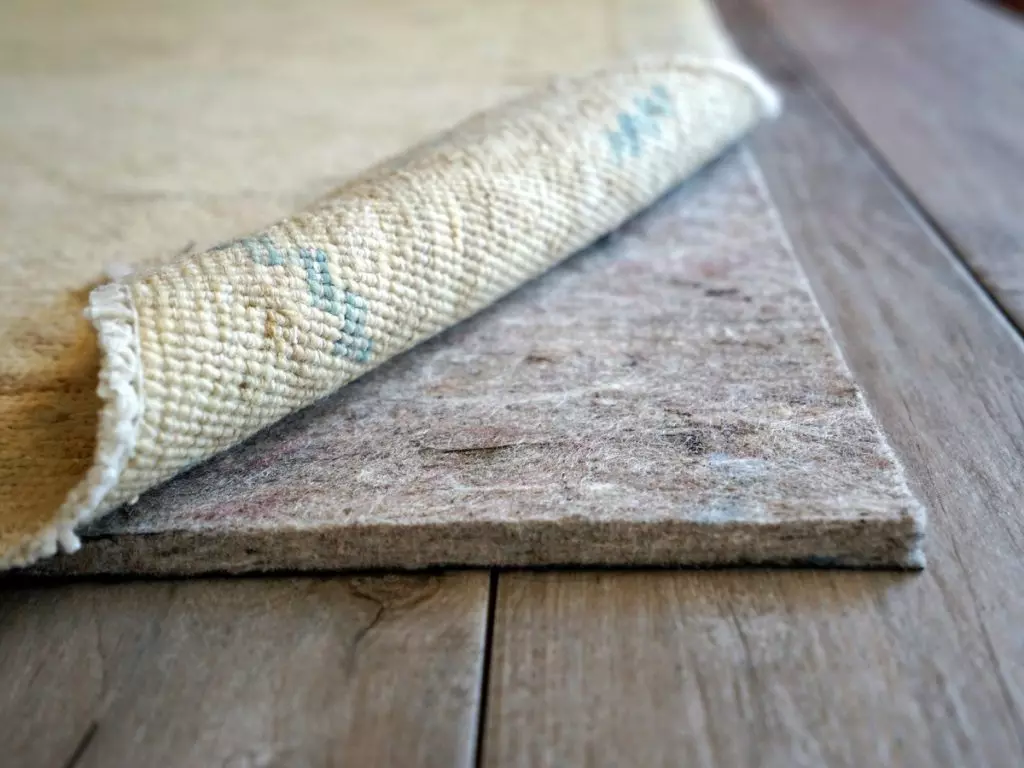
Wool
Woolen gaskets are cutting into those consumers who have allergies to other materials. Usually they include Latex products. Natural biological material is not only environmentally friendly, it is able to restore its initial structure after squeezing.
Such substrates are not suitable for users who have allergies directly on wool.
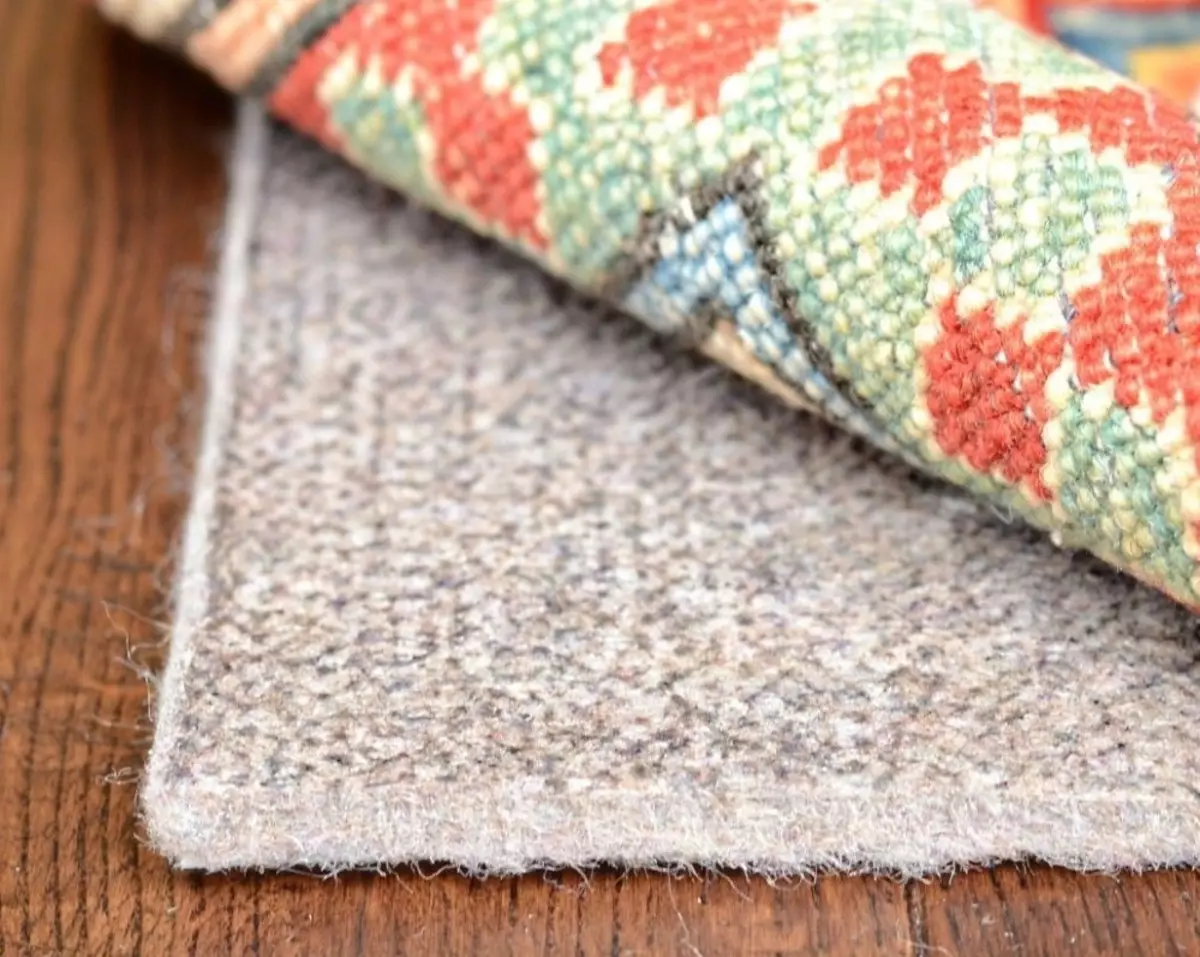
Rubber
Rubber anti-slip substrates under the carpet - alternative models from PVC. The material is convenient in those situations when a lining is needed with a small thickness. But rubber is not capable of performing heat and sound insulation, as well as decent depreciation.
Article on the topic: How to remove plasticine from carpet without a trace: Simple methods and Recommendations for cleaning
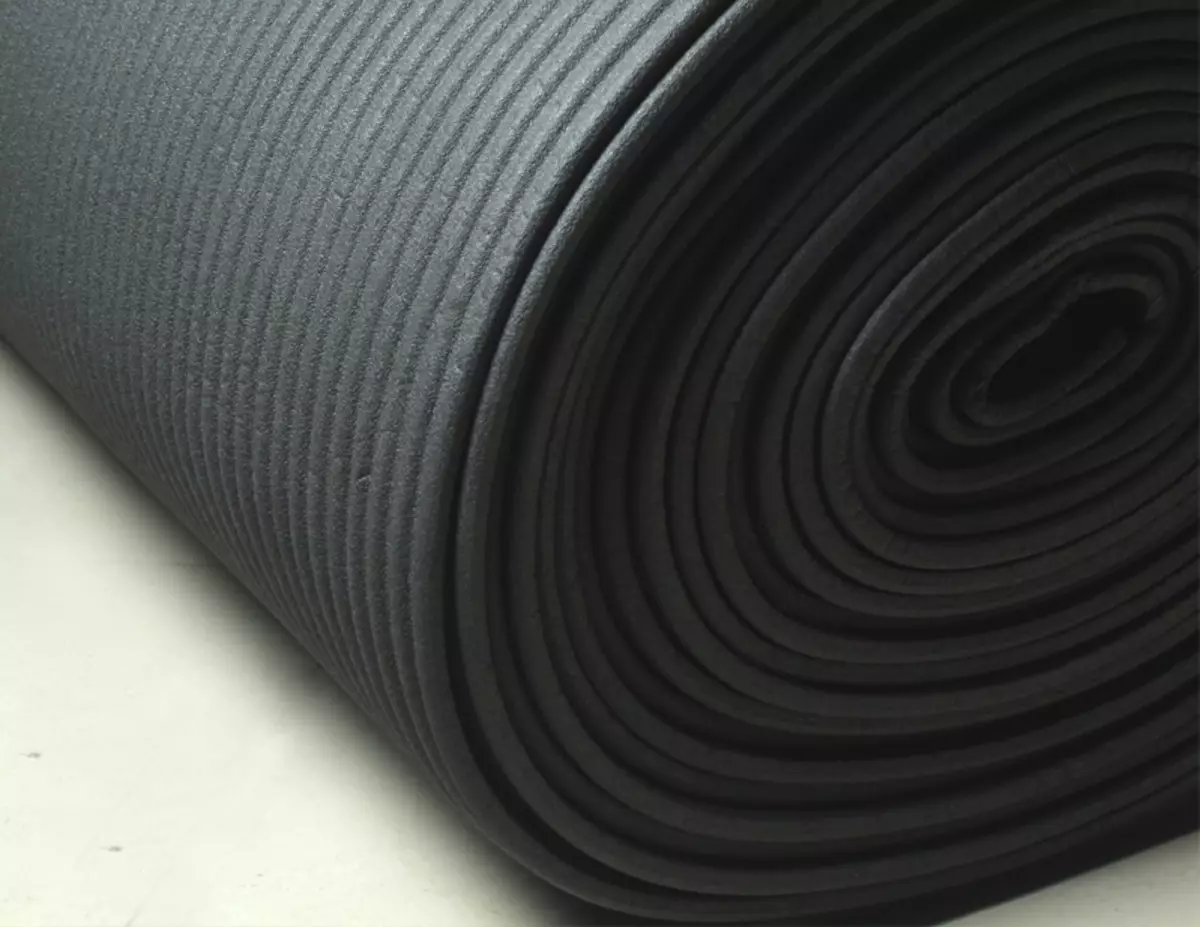
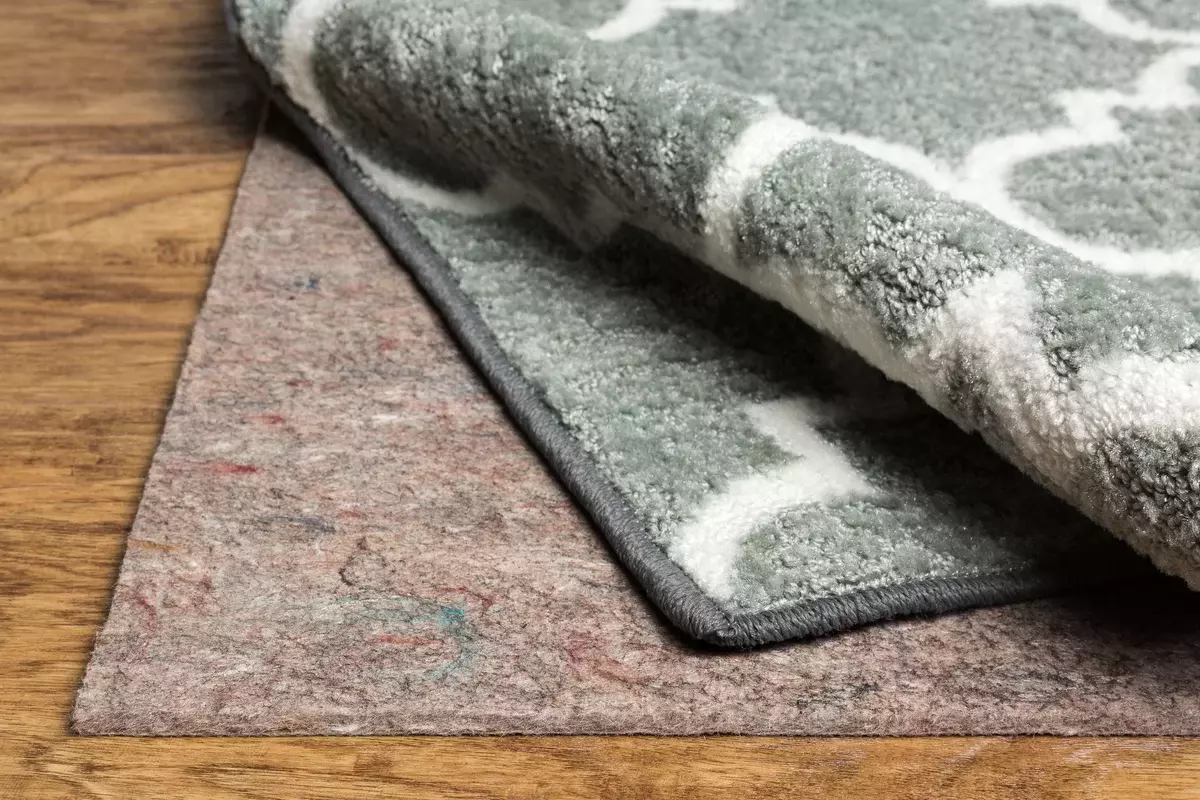
Adhesive substrate
Very thin substrate, the thickness of which does not exceed 1 mm, is intended for very smooth floors. It has high anti-slip properties. It is capable of protecting the floor covering from various damage, such as the pressure of the furniture legs, the appearance of scratches with fibers on the wrong side of the carpet.
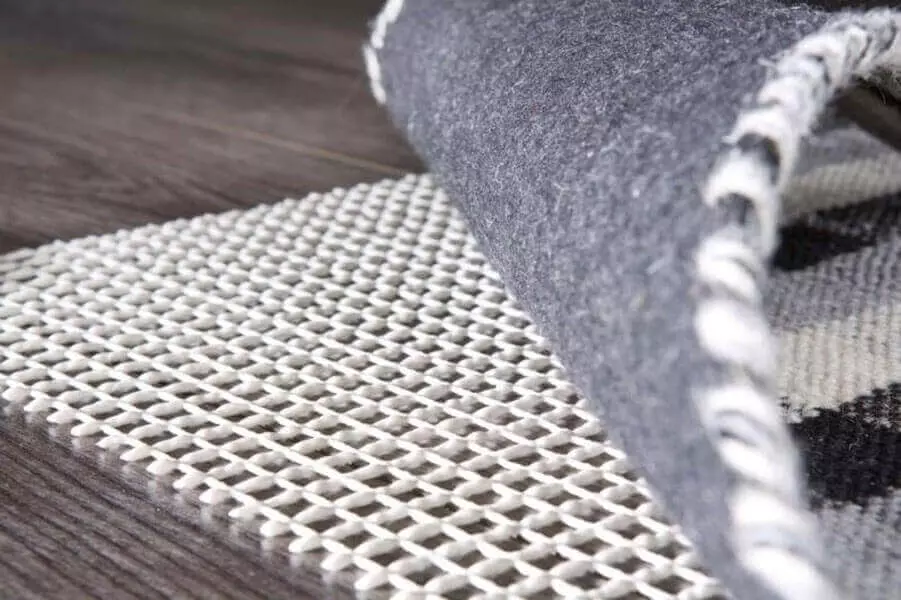
Impregnated with acrylic glue, by means of which is attached to the carpet and the floor. Well withstands the effects of wheels from the chairs.
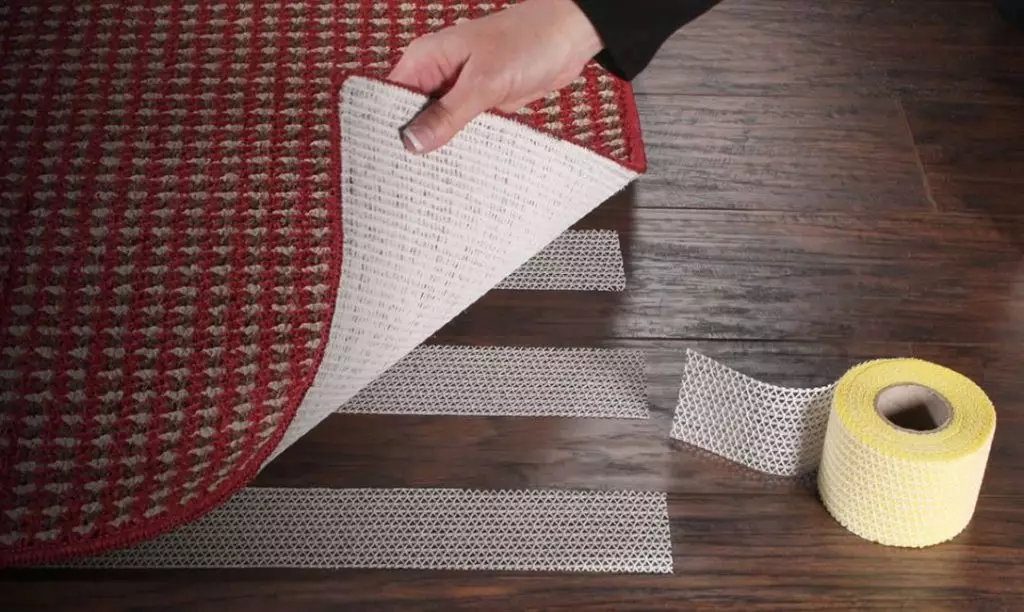
You can make a choice of high-quality material in the IKEA store. The adhesive grid will make it easier and care for the carpet. The cost of the substrate from IKEA is 189 rubles for 2 rose meters.
Adhesive substrate
This is a product that is equipped with a pile from two sides and glue impregnation. Purpose it is to use for smooth and textile coatings. It is made of fiberglass, protected by the finest film from plastic. The substrate is impregnated with acrylic glue. Its thickness slightly more than ordinary adhesive gasket and is 2.5-3 mm.
The presence of a pile increases the properties of anti-slip and fixing on products. Such a substrate is perfect for those housing places where a high degree of passability is observed.
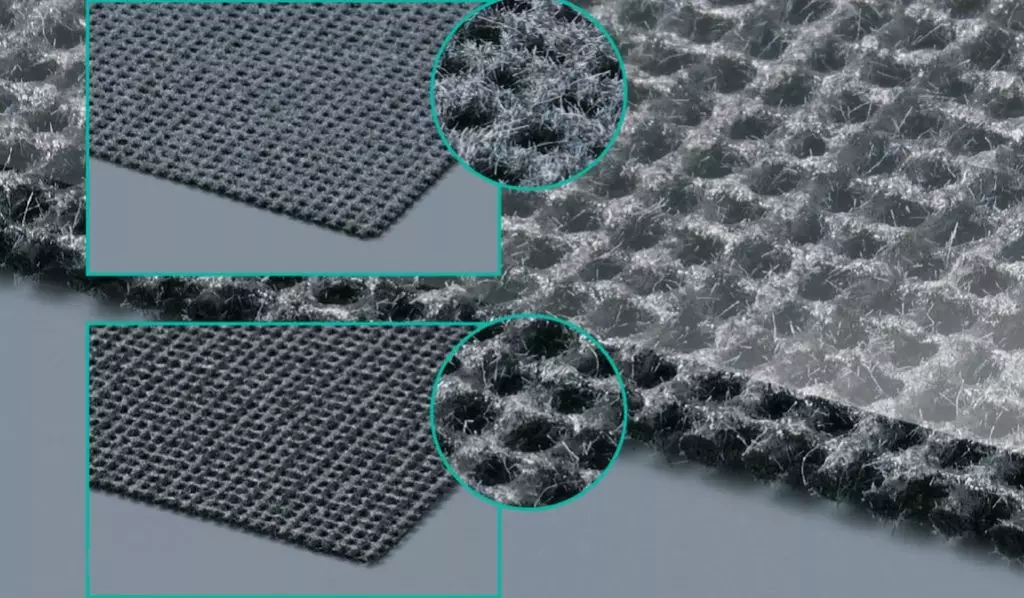
Lining under carpet products have many advantages. You can purchase goods in IKEA stores that work in several parts of Moscow. Also anti-slip bedding, corners and ribbons can be purchased in online stores specializing in the sale of carpets.
A simple and radical decision against rolling slip (1 video)
Different substrate options (33 photos)
